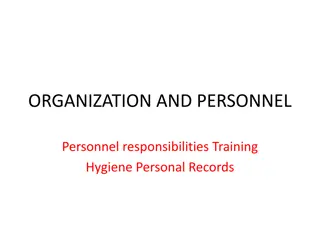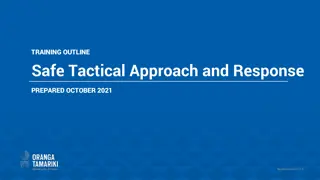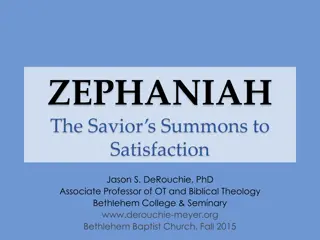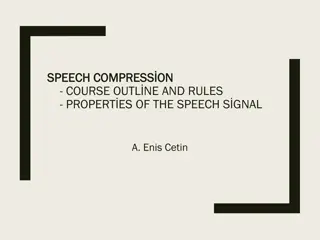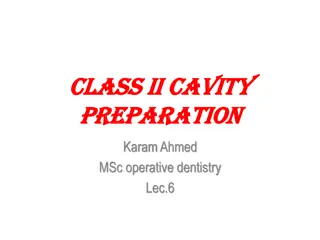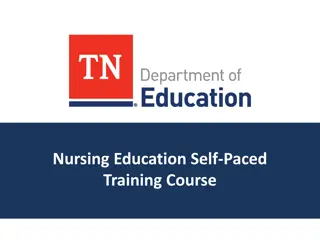
Transistors: How They Work in Electronics
Delve into the world of transistors with this detailed guide. Learn about the different states of transistors, their components, and how they function to control the flow of electrical currents. Explore the workings of a transistor in a step-by-step manner, from applying voltage to the gate to turning the transistor on and off. Enhance your knowledge of transistor technology with informative visuals and clear explanations.
Uploaded on | 1 Views
Download Presentation

Please find below an Image/Link to download the presentation.
The content on the website is provided AS IS for your information and personal use only. It may not be sold, licensed, or shared on other websites without obtaining consent from the author. If you encounter any issues during the download, it is possible that the publisher has removed the file from their server.
You are allowed to download the files provided on this website for personal or commercial use, subject to the condition that they are used lawfully. All files are the property of their respective owners.
The content on the website is provided AS IS for your information and personal use only. It may not be sold, licensed, or shared on other websites without obtaining consent from the author.
E N D
Presentation Transcript
Signal: Two States ( ) high low 2
Switch( ) gate as the switch 3
A Working Transistor (1/5) Transistors consist of three terminals; the source, the gate, and the drain: 4
A Working Transistor (2/5) In the n-type transistor, both the source and the drain are negatively-charged and sit on a positively-charged well of p-silicon. 5
A Working Transistor (3/5) When positive voltage is applied to the gate, electrons in the p-silicon are attracted to the area under the gate forming an electron channel between the source and the drain. 6
A Working Transistor (4/5) When positive voltage is applied to the drain, the electrons are pulled from the source to the drain. In this state the transistor is on. 7
A Working Transistor (5/5) If the voltage at the gate is removed, electrons are not attracted to the area between the source and drain. The pathway is broken and the transistor is turned off. 8
Basic Organization of Any Computer Keyboard, Mouse Computer Processor (active) Memory (passive) Devices Disk (where programs, data live when not running) Input Control ( brain ) (where programs, data live when running) Datapath ( brawn ) Output Display, Printer 16
Computer Organization Capabilities and performance characteristics of principal functional units, e.g., registers, ALU, shifters, ... Ways in which these components are interconnected (structure) Information flows between components (data, datapath) Logic and means by which such information flow is controlled (control logic) Register Transfer Level (RTL) description 17
What is Computer Architecture? Application (IE) Operating System (MS Windows) Compiler Assembler Software Instruction Set Architecture Hardware Processor Memory I/O system Datapath & Control Digital Design Circuit Design Transistors Machine Organization Computer Architecture = Instruction Set Architecture + Machine Organization 18
Instruction Set as a Critical Interface software instruction set hardware Does it have to be hardware? Coordination of many levels of abstraction 19
Another Perspective temp = v[k]; v[k] = v[k+1]; v[k+1] = temp; High Level Language Program Compiler lw $15, 0($2) lw $16, 4($2) sw $16, 0($2) sw $15, 4($2) Assembly Language Program ISA Assembler Machine Language Program 0000 1001 1100 0110 1010 1111 0101 1000 1010 1111 0101 1000 0000 1001 1100 0110 1100 0110 1010 1111 0101 1000 0000 1001 0101 1000 0000 1001 1100 0110 1010 1111 Machine Interpretation Control Signal Specification ALUOP[0:3] <= InstReg[9:11] & MASK 20
Instruction Set Architecture (ISA) ... the attributes of a [computing] system as seen by the programmer, i.e. the conceptual structure and functional behavior, as distinct from the organization of the data flows and controls, the logic design, and the physical implementation. Amdahl, Blaaw, and Brooks, 1964 Organization of Programmable Storage SOFTWARE Data Types and Data Structures: Encodings and Representations Instruction Set Instruction Formats Modes of Addressing and Accessing Data Items and Instructions Exceptional Conditions 21
MIPS R3000 ISA Registers Instruction categories: Load/Store Computational Jump and Branch Floating Point coprocessor Memory Management Special R0 - R31 PC HI LO 3 Instruction Formats: all 32 bits wide OP rs rd sa funct rt immediate OP rs rt jump target OP 22
Example ISA Digital Alpha (v1, v3) HP PA-RISC Sun Sparc SGI MIPS Intel ARM 1992-97 1986-96 1987-95 1986-96 1978- (v1.1, v2.0) (v8, v9) (MIPS I, II, III, IV, V) (8086,80286,80386, 80486,Pentium, MMX, SIMD, IA-64, ...) (v1,v2 v8) 1985- 23
Why Do Computer Architecture? RAPID CHANGES It is exciting! It has never been more exciting! It impacts every other aspect of electrical engineering and computer science 24
Flipped Classroom Before class: Watch video and learn it by yourself (group study) In class: First part: Students ask questions and teacher answers questions (for general questions) Group study and individuals tutored by TAs and teacher Second part: TA gives a set of questions Group discussion Tournament Submit final answer sheet After class Review the course and complete assignments Take midterm and final exams One final project Outline-24
Group Performance Forming study groups. Each group has 5-6 students. For members in the same group, their group performance will be the same Advanced learner will help less advanced learner! Group performance (in each class period) First part: Students participation and interaction with teacher (teacher asks question or students raise question) each group has at most 1 point Second part: Group discussion : prepare your answers Tournament 2 points are distributed to the two groups (ask-group and answer-group) Submission of answer sheet 1 point Outline-25
In Class Second Part Second part: TA is the moderator Each group prepares two questions and upload the questions to ILMS by Friday noon. Moderator checks all questions and may ask some groups to load more questions if there is too much duplication among groups. Outline-26
In Class Second Part Group Discussion: 1 point TA will select several questions from the question pool uploaded by each group and give a question sheet at the beginning of part 2. Group discussion. Submit your group answer-sheet at the end of class. Tournament: 2 points TA selects five questions from the question sheet (ask- groups) TA randomly select one member of answer-groups (question unselected) to answer the question. If answer-group can not answer the question, ask-group has to give the answer. The question may be answered on the blackboard 2 points are distributed between these two groups based on their performance Outline-27
Course Administration : : email: tingting@cs.nthu.edu.tw : yhchen@cs.nthu.edu.tw s102062567@m102.nthu.edu.tw s103062527@m103.nthu.edu.tw s103062556@m103.nthu.edu.tw : CS4100-03: : EECS 128 : http://www.cs.nthu.edu.tw/~tingting/cs4100.html 442 : 31310 : : : : 20:00~22:00 20:00~22:00 20:00~22:00 20:00~22:00 10:10-1:00 25
Text Book Computer Organization and Design: The Hardware/Software Interface, 5th ed., David Patterson and John Hennessy, 2013 portraitsmall 26
Topics Covered Computer Organization and Design: The Hardware/Software Interface, 5th ed., 2013 D. Patterson and J. Hennessy Topic Chapter Introduction The Role of Performance Instructions: Language of the Machine Arithmetic for Computers The Processor: Datapath and Control Enhancing Performance with Pipelining Exploiting Memory Hierarchy 1 1 2 3 4 4 5 27
Prerequisite Prerequisite courses: Logic design 28
Expected Course Workload Learn MIPS instruction set Learn processor emulators and benchmarking 1 final project One mid-term and one final examination Grade breakdown In-class performance Assignments & Final project Midterm Exam (7-9PM, April 29, Wed): Final Exam (June 22): 30% 10% 30% 30% Outline-32 29
Resource on Internet to Help Your Learning Website http://www.cs.nthu.edu.tw/~tingting/cs4100.html Open Course Ware (OCW) http://ocw.nthu.edu.tw/ocw/index.php?page=course&ci d=76& ShareCourse http://www.sharecourse.net/sharecourse/course/view/c ourseInfo/26 MOOCs http://mooc.nthu.edu.tw/sharecourse/course/view/cours eInfo/26 <- need to register for the course first 30
Course Problems Cannot make examinations No makeup examinations Cannot turn in homework on time No late homework is accepted What is cheating? Study together in group is encouraged Work must be your own 31


